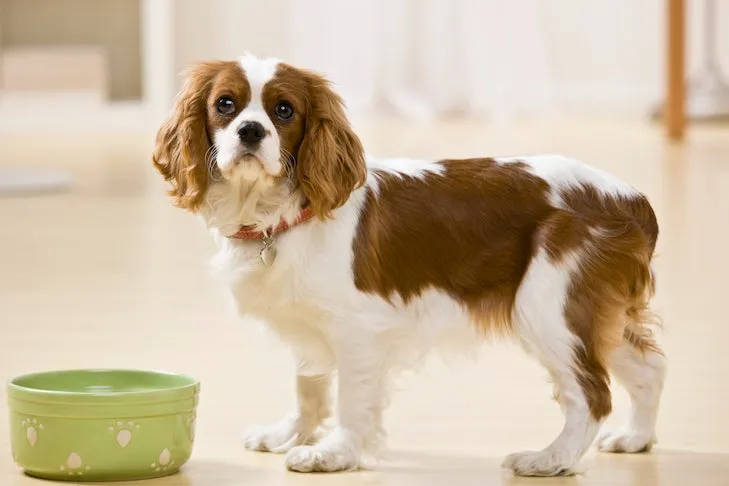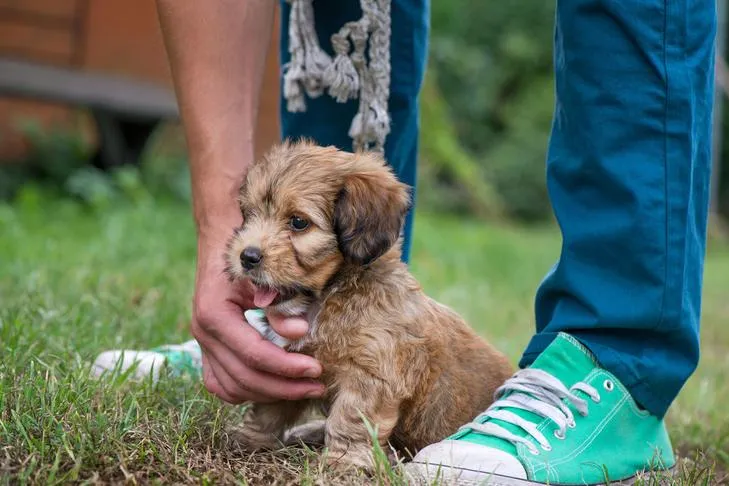Bringing a new puppy home is an exciting time, filled with joy and the anticipation of a lifelong bond. However, one of the most crucial first steps to ensure a happy and harmonious life together is mastering puppy house training. This process lays the groundwork for good behavior, helps your puppy establish a healthy routine, and keeps your home clean and odor-free. A well-trained puppy fosters a positive relationship from the start and sets your training journey on the right track.
Why Potty Training is Non-Negotiable
While teaching your puppy their name, socialization, and basic obedience are all vital, housetraining should be prioritized. It’s a fundamental skill that impacts every aspect of your relationship with your dog. Successfully potty training your puppy creates a clean living environment, reinforces good habits, and builds confidence in both you and your furry companion.
Proven Potty Training Methods for Success
Renowned experts like Dr. Mary Burch, Ph.D., Director of the AKC’s Canine Good Citizen and S.T.A.R. Puppy programs, emphasize that while various methods exist, success hinges on consistent application of basic principles.
Mastering Crate Training for Housetraining
Dog crates are invaluable tools that simplify many aspects of dog ownership, from vet visits to travel. Dogs are naturally den animals, seeking out secure spaces for comfort and security. Training your puppy to view their crate as a positive den makes them more receptive to housetraining.
The core principle behind crate training for housetraining is a dog’s inherent cleanliness. They inherently dislike soiling their living space. It’s paramount that the crate is the correct size – just large enough for your puppy to stand, turn around, and lie down comfortably. An oversized crate can inadvertently encourage them to use a corner as a toilet. Many crates come with adjustable partitions, allowing you to modify the size as your puppy grows.
 Puppy in a crate
Puppy in a crate
When your puppy feels the urge to relieve themselves, they will typically signal this by whining or scratching at the crate door. This is their way of indicating they need to go outside. If you allow them to have an accident inside the crate, they may come to believe it’s an acceptable place to eliminate, which can hinder the housetraining process.
The Role of Puppy Pads and Paper Training
Dr. Burch notes that using puppy pads and paper training can sometimes present challenges, as it can inadvertently reinforce two distinct elimination options for the puppy. Ideally, puppies learn to hold it indoors and only relieve themselves in designated outdoor spots. However, certain circumstances, such as a demanding work schedule that prevents frequent outdoor breaks or extremely harsh weather conditions, might necessitate a more creative approach.
Puppy pads offer a controlled indoor option for your puppy to relieve themselves. There are also specialized indoor dog potties designed for this purpose, some even accommodating male dogs. Once your puppy matures, you can then transition them to exclusively eliminating outdoors.
Establishing a Consistent Housetraining Schedule
Consistency is the cornerstone of successful housetraining. Puppies have small bladders and digestive systems, meaning they need frequent opportunities to go outside. A general guideline is that a puppy can hold their bladder for approximately the number of hours corresponding to their age in months, up to about 9-12 months old. For instance, a 6-month-old puppy might reasonably be expected to hold it for around 6 hours. However, remember that 10-12 hours is a significant duration for any being to hold it. Individual puppies will vary, so observe your puppy’s unique needs.
Pay close attention to your puppy’s daily activities and habits when creating their schedule. For very young puppies, expect to take them out:
- First thing in the morning and last thing at night.
- Immediately after playing indoors.
- After waking up from a nap or spending time in their crate.
- After eating, drinking, or chewing a toy or bone.
This could mean taking your puppy out a dozen or more times in a 24-hour period. If you work outside the home, arrange for someone to help maintain this schedule, such as a trusted friend, family member, or a professional dog walker. The faster your puppy understands where the appropriate place to eliminate is, the sooner you can move past this initial phase.
 Beagle puppy on leash walking in the grass.
Beagle puppy on leash walking in the grass.
Diligent Observation and Supervision
Constant observation of your puppy is key to understanding their individual signals and rhythms. Some puppies can hold it longer than others, while some may need to go out every time they play or become excited. Others might stop mid-play session to relieve themselves before resuming. Just like human babies, each puppy’s potty habits are unique.
The Impact of Your Dog’s Diet
Puppies have immature digestive systems and benefit from smaller, more frequent meals. It’s often recommended to feed them three small meals a day. Additionally, prioritize high-quality puppy food that agrees with your puppy’s system.
Monitoring your puppy’s stool is an excellent way to gauge their digestive health. If you notice consistently bulky, loose, or foul-smelling stools, it’s a good idea to consult your veterinarian. They may suggest a change in diet. Overfeeding can also lead to diarrhea, which can complicate the housetraining process.
 Cavalier King Charles Spaniel with food bowl
Cavalier King Charles Spaniel with food bowl
Positive Reinforcement for Outdoor Success
Scolding your puppy for accidents indoors, especially after the fact, is generally ineffective. Positive reinforcement for doing the right thing is far more impactful. Celebrate every successful outdoor elimination as if it were a momentous achievement.
Be enthusiastic with your praise! Cheer, clap, and offer small, easily digestible treats. Let your puppy know that their outdoor potty success is highly valued. If your puppy has an accident, avoid making a fuss. Simply clean it up thoroughly using an enzymatic cleaner that eliminates odors to prevent them from returning to the same spot. Blot up any liquid from carpets before cleaning.
If you catch your puppy in the act of squatting to eliminate indoors, immediately pick them up and carry them outside. If they finish the job outdoors, shower them with praise and attention. Remember, prevention and positive reinforcement are the cornerstones of successful housetraining.
 Puppy being trained in the grass.
Puppy being trained in the grass.
Troubleshooting Common Housetraining Challenges
While adhering to these principles typically leads to a well-house-trained puppy, occasional setbacks can occur. Dr. Burch points out that persistent house soiling can sometimes indicate an underlying physical issue. If housetraining proves exceptionally difficult, a thorough veterinary check-up is recommended. If your vet confirms your puppy is healthy, seeking guidance from an experienced trainer or behaviorist specializing in such issues is the next step.
Persistent Piddling Indoors
This is a common concern, particularly with smaller breeds. Some trainers advocate for teaching puppies to use indoor potty spots, similar to a cat using a litter box. Beyond puppy pads, dedicated dog potty boxes are available. With consistent effort, even small dogs can be successfully house-trained, though it may require additional time and attention.
Repeated Accidents in the Same Spot
This often indicates that the accident was not cleaned thoroughly enough. Lingering odors can signal to your puppy that this is an acceptable elimination area. Ensure you have ample enzymatic pet stain cleaners and follow their usage instructions carefully to eliminate all traces of scent.
Accidents After Granting Freedom
A common mistake is to give a puppy too much freedom too soon. Seeing initial progress and prematurely declaring victory can lead to regressions. Even when your puppy is consistently performing correctly, maintain the established schedule to solidify good habits.
Soiling Their Crate
Rescued dogs who have experienced prolonged confinement without adequate potty opportunities may soil their crates. The most effective approach is to revert to the fundamentals of crate and house training. This involves:
- Assessing your dog’s ability to control their bladder and bowels when outside the crate.
- Carefully managing their diet and maintaining a strict schedule.
- Providing frequent trips outside, especially after meals, first thing in the morning, and last thing at night.
- If you work or will be away for extended periods, consider hiring a dog walker or enlisting the help of a trusted neighbor or friend to let your dog out.
- Always thoroughly clean any accidents to eliminate lingering odors.
How Long Does Puppy Potty Training Typically Take?
The duration of potty training varies significantly, influenced by factors such as your puppy’s age, prior learning experiences, and the consistency of your training methods. An 8-week-old puppy has different developmental capabilities than a 5-month-old. While some puppies master housetraining within days, others may require months, particularly if they have a history of less-than-ideal living situations. However, with patience and persistence, most dogs can achieve successful housetraining.
